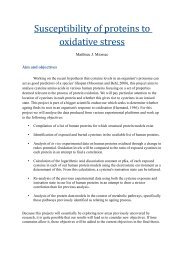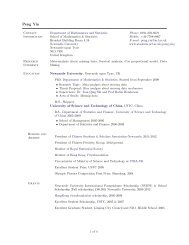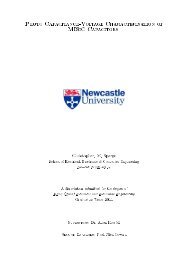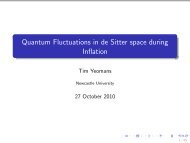Retinal Prosthesis Dissertation - Student Home Pages
Retinal Prosthesis Dissertation - Student Home Pages
Retinal Prosthesis Dissertation - Student Home Pages
Create successful ePaper yourself
Turn your PDF publications into a flip-book with our unique Google optimized e-Paper software.
2.6.2 FPGA representation of epi_retinal approach<br />
The following diagram (figure 21) gives a basic overview of the epi_retinal<br />
prosthesis. The sender chip receives the camera output and converts it to an AER<br />
protocol[170]. This serial communication of a stream of pulses is wired from the<br />
sender chip to the receiver chip. In this diagram the separation of the receiver chip<br />
into two distinct parts i.e. external to the body and internal to the body is not shown,<br />
this is ably discussed in other papers [53]. The action of the receiver chip is to<br />
convert the serial transmission into the parallel form required for transmission to the<br />
retinal implant incorporating timing considerations, to form biphasic pulses. The<br />
implant (Addressing the implant) is then addressed in the sense that all wires now<br />
entering the eyeball carry a separate stream of information for each electrode to be<br />
driven by the post processing electrode drivers attached to the electrode array.<br />
AER protocol<br />
Receiver.<br />
<strong>Retinal</strong> implant.<br />
PISO<br />
Sender.<br />
Digital address<br />
stream (AER)<br />
Serial to parallel conversion<br />
Timing considerations<br />
Addressing the implant<br />
Form biphasic pulses<br />
Electrode<br />
array<br />
Control/<br />
addressing<br />
Figure 21 FPGA view of processing<br />
48 of 200
















